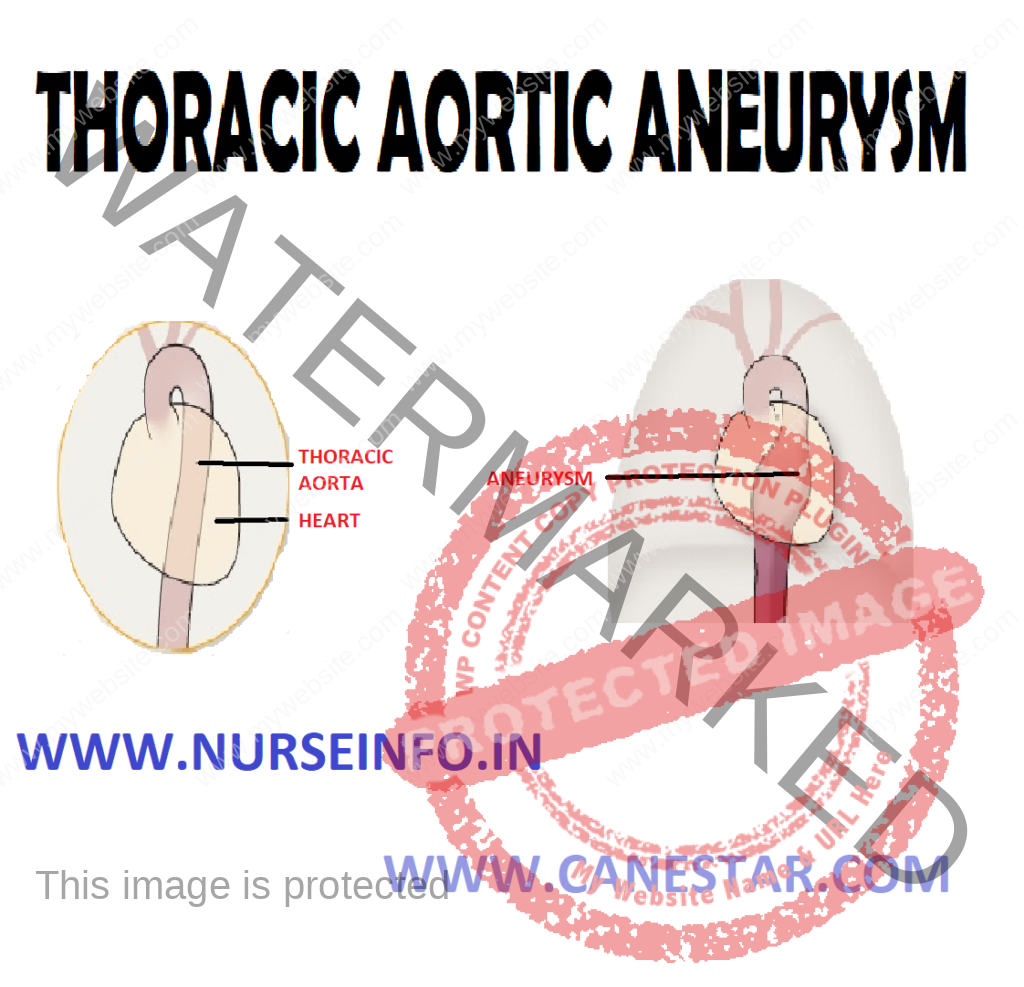THORACIC AORTIC ANEURYSM – Introduction, Clinical Manifestations, Signs and Symptoms, Diagnostic Evaluation and Management
INTRODUCTION
Approximately 85% of all cases of thoracic aortic aneurysm are called by atherosclerosis. They occur most frequently in men between ages 40 and 70 years. The thoracic area is the most common site for a dissecting aneurysm. About one-third of patients with thoracic aortic aneurysm die of rupture of aneurysm
CLINICAL MANIFESTATIONS
Symptoms are variable and depend on how rapidly the aneurysm dilates and how the pulsating mass affects the surrounding intrathoracic structures. Some of the patients are asymptomatic. But some are having:
- Pain occurring in supine position
- Dyspnea
- Hoarseness
- Stridor
- Weakness
- Aphonia
- Dysphasia
ASSESSMENT AND DIAGNOSTIC TESTS
- Physical Examination: superficial veins of neck, chest or arm dilated
- Chest X-ray
- Transesophageal echocardiography
TREATMENT (Medical Management)
- Antihypertensive: hydralazine hydrochloride
- Beta blocker: atenolol, timolol maleate
Surgical Management
Repair of an ascending aortic wall aneurysm and aortic wall replacement —- incision into aortic aneurysm —- aortic wall replacement with aortic graft implant to repair ascending aortic aneurysm —- aortic aneurysm trimmed —- then closed over graft
Abdominal Aortic Aneurysm
Introduction
The most common cause of abdominal aortic aneurysm is arteriosclerosis. The condition which is more common among Caucasians population affects men 4 times more often than women and it is most prevalent in elderly patients. Most of this aneurysm occurs below renal arteries. Untreated, the eventual outcome may be rupture and death.
CAUSES
- Congenital weakness
- Smoking
- Hypertension (50% cases)
CLINICAL MANIFESTATIONS
- Patient feels his heart beating in abdomen
- Abdominal mass
- Abdominal throbbing
ASSESSMENT AND DIAGNOSTIC TESTS
- Physical Examination: superficial veins of neck, chest or arm dilated
- Duplex ultrasonography
- CT scan: determine size, length and location of aneurysm
TREATMENT (Medical Management)
- Medical therapy of aortic aneurysms involves strict blood pressure control. This does not treat the aortic aneurysm per se, but control of hypertension within tight blood pressure parameters may decrease the rate of expansion of the aneurysm
- The tetracycline and doxycycline is currently being investigated for use as a potential drug in the prevention of aortic aneurysm due to its metalloproteinase inhibitor and collagen-stabilizing properties
PREVENTION
Attention to patient’s general blood pressure, smoking and cholesterol risks helps reduce the risk on an individual basis. There have been proposals to introduce ultrasound scans as a screening tool for those most at risk: men over the age of 65
Surgical Management
For abdominal aortic aneurysms, suggest elective surgical repair when the diameter of the aneurysm is greater than 5 cm (2 in). However, suggest medical management for abdominal aneurysms with a diameter of less than 5.5. (2 in).
Open Surgery
Open surgery typically involves dissection of the dilated portion of the aorta and insertion of a synthetic (Dacron or Gore-Tex) patch tube. Once the tube is sewn into the proximal and distal portions of the aorta, the aneurysmal sac is closed around the artificial tube. Instead of sewing, the tube ends, made rigid and expandable by nitinol wireframe, can be much more simply, quickly and effectively inserted into the vascular stumps and there permanently fixed by external ligature
Endovascular Surgery
The endovascular treatment of aortic aneurysms involves the placement of an endovascular stent via a percutaneous technique (usually through the femoral arteries) into the diseases portion of the aorta. This technique has been reported to have a lower mortality rate compared to open surgical repair, and is now being widely used in individuals with comorbid conditions that make them high-risk patients for open surgery


